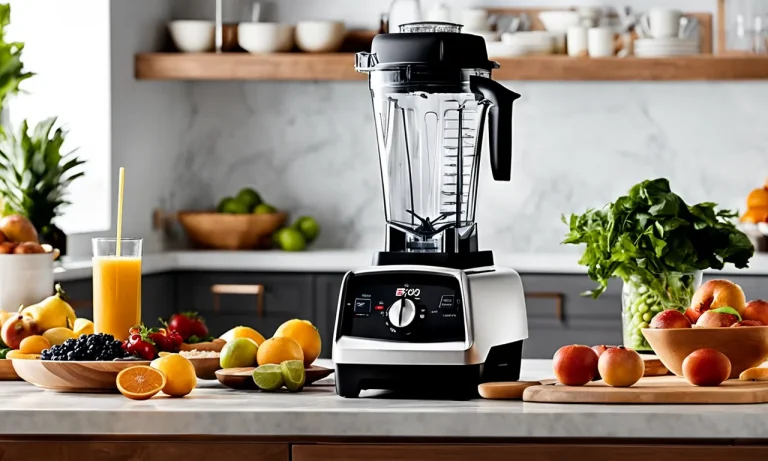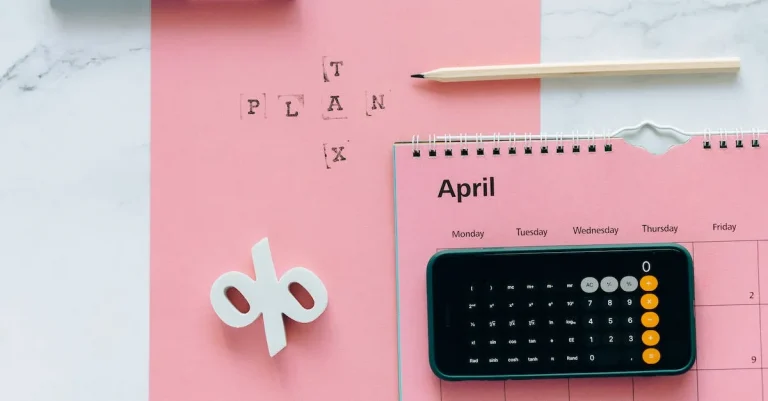How Much Is Real Silver Silverware Worth?
Silverware has long been a staple at fancy dinner parties and in upscale homes. But how much are those forks and spoons actually worth if they are made from real silver?
If you’re short on time, here’s a quick answer to your question: The value of real silver silverware depends on several factors like the silver content, brand, condition, design, and current market prices for silver.
In this comprehensive guide, we’ll cover everything you need to know about assessing the value of silver flatware, including:
1. What makes silverware real silver vs silver plate
2. Popular silverware brands and patterns
3. How to identify silver hallmarks and quality
4. Factors that determine silverware value
5. Estimating silverware melt value
6. Getting silverware appraised by a professional
What Makes Silverware Real Silver vs Silver Plate
When it comes to silverware, it’s important to understand the difference between real silver and silver plate.
Real silverware is made of sterling silver, while silver plate refers to a base metal that is coated with a layer of silver.
The key factor that distinguishes the two is the composition of the metal itself.
Sterling Silver vs Silver Plate
Sterling silver is a popular choice for high-quality silverware due to its durability and beauty.
It is made up of 92.5% silver and 7.5% of other metals, usually copper.
This combination creates a strong alloy that is suitable for crafting intricate designs and can withstand everyday use. One way to identify sterling silverware is by looking for the hallmark, which indicates the purity of the silver.
Silver plate, on the other hand, consists of a base metal, such as copper or nickel, that is coated with a thin layer of silver. This process is often done through electroplating, where an electric current is used to deposit the silver onto the base metal.
While silver plate can provide a similar aesthetic to real silver, it is generally less valuable and more prone to tarnishing over time.
Nickel Silver and Alpaca Silverware
In addition to sterling silver and silver plates, there are other types of silverware that are worth mentioning. One of these is nickel silver, which does not actually contain any silver.
Nickel silver is an alloy made of copper, nickel, and zinc. It is often used as a silverware material due to its silver-like appearance and resistance to tarnish.
However, it is important to note that nickel silver does not hold any intrinsic value in terms of precious metal content.
Another type of silverware to be aware of is alpaca silver. Contrary to its name, alpaca silver does not contain any silver either. It is an alloy made of copper, nickel, and zinc.
Alpaca silver is commonly used in jewelry and silverware due to its affordability and resemblance to real silver.
However, it is crucial to understand that alpaca silverware does not have any significant silver content and should not be mistaken for real silver.
Understanding the difference between real silver and silver plate, as well as the various types of silverware available, is essential when determining the value of your silverware collection.
If you are unsure about the authenticity or worth of your silverware, it is recommended to consult with a professional appraiser or refer to reputable sources such as www.antiquesilverlondon.com for more information.
Popular Silverware Brands and Patterns
When it comes to real silver silverware, there are several popular brands and patterns that are highly sought after by collectors and enthusiasts.
These brands have a long-standing reputation for their craftsmanship, quality, and unique designs.
Gorham
Gorham is one of the most well-known and respected silverware brands in the industry. Founded in 1831, their silverware is known for its intricate designs and attention to detail.
Some popular patterns from Gorham include Chantilly, Strasbourg, and Buttercup.
Did you know? Gorham silverware was used on the Titanic, adding to its historical significance.
Towle
Towle is another renowned brand that has been producing silverware since 1690. Their silverware is known for its elegant and timeless designs.
Some popular patterns from Towle include Old Master, French Provincial, and Candlelight.
Fun fact: Towle silverware was used in the White House during the administrations of several presidents, including Abraham Lincoln.
Wallace
Wallace silverware is famous for its superior quality and craftsmanship. Established in 1835, Wallace has a wide range of patterns that cater to different tastes and preferences.
Some popular patterns from Wallace include Grande Baroque, Rose Point, and Sir Christopher.
Interesting fact: Wallace silverware was used in the iconic television series “Downton Abbey,” adding a touch of authenticity to the show’s setting.
International Silver Co.
International Silver Co. is a well-known brand that has been producing silverware since 1898. They offer a wide range of patterns that cater to both traditional and contemporary tastes.
Some popular patterns from International Silver Co. include Prelude, Joan of Arc, and Royal Danish.
Did you know? International Silver Co. silverware was used in the famous Waldorf Astoria Hotel in New York City.
Reed & Barton
Reed & Barton is a prestigious brand that has been producing silverware since 1824. Their silverware is known for its exquisite designs and exceptional quality.
Some popular patterns from Reed & Barton include Francis I, Burgundy, and Tara.
Fun fact: Reed & Barton silverware was used in the movie “Titanic” to recreate the elegance of the era.
Tiffany & Co.
Tiffany & Co. is synonymous with luxury and elegance. Founded in 1837, their silverware is highly coveted by collectors worldwide.
Some popular patterns from Tiffany & Co. include Audubon, Faneuil, and Olympian.
Interesting fact: Tiffany & Co. silverware was used in the iconic film “Breakfast at Tiffany’s,” adding to its cultural significance.
These popular silverware brands and their exquisite patterns are not only valuable in terms of craftsmanship but also hold historical and cultural significance.
If you happen to come across silverware from these brands, it may be worth investigating its worth and potentially adding it to your collection.
How to Identify Silver Hallmarks and Quality
When it comes to determining the value of silverware, one of the key factors to consider is the silver hallmark.
Hallmarks are small stamps or markings that indicate the purity and quality of the silver used in the piece. By understanding these hallmarks, you can easily identify the type of silver you have and its potential worth.
Sterling Silver Hallmarks (.925)
Sterling silver is the most common type of silver used in silverware. It is composed of 92.5% silver and 7.5% other metals, usually copper, to improve durability. Sterling silver is highly valued for its beauty and durability.
To identify sterling silver, look for the hallmark “925” or “.925” on the piece. This indicates that it is made of 92.5% pure silver. Some common sterling silver hallmarks include the lion passant, the anchor, and the date letter.
Coin Silver Hallmarks (.900)
Coin silver is another type of silver commonly used in silverware. It is composed of 90% silver and 10% other metals. Coin silver was commonly used in the United States before sterling silver became popular.
To identify coin silver, look for the hallmark “900” or “.900” on the piece. This indicates that it is made of 90% pure silver.
Coin silver hallmarks can vary depending on the country of origin, so it’s important to research specific hallmarks for accurate identification.
Britannia Silver Hallmarks (.958)
Britannia silver is a higher-purity silver alloy that contains 95.8% silver and 4.2% other metals. It is often used in luxury silverware and is highly valued for its superior quality.
To identify Britannia silver, look for the hallmark “958” or “.958” on the piece. This indicates that it is made of 95.8% pure silver. Britannia’s silver hallmarks may also include the lion passant and the date letter.
Silver Plate Hallmarks
Silver plate refers to silverware that is made of a base metal, such as copper or brass, with a thin layer of silver applied to the surface. While a silver plate does not have the same intrinsic value as solid silver, it can still be valuable depending on its age, condition, and craftsmanship.
Identifying silver plate hallmarks can be a bit more challenging, as they can vary depending on the manufacturer. Some common silver plate hallmarks include EPNS (ElectroPlated Nickel Silver) and A1 (highest quality).
It’s important to research specific hallmarks or consult with an expert to determine the value of your silver plate pieces.
Remember, identifying silver hallmarks is just the first step in determining the value of your silverware.
Factors such as the age, condition, rarity, and craftsmanship of the piece also play a significant role.
If you’re unsure about the value of your silverware, consider consulting with a reputable appraiser or silverware dealer for a professional assessment.
Factors That Determine Silverware Value
Silver Content and Weight
One of the most important factors that determine the value of silverware is its silver content and weight. The higher the silver content, the more valuable the piece will be.
Silverware is typically made from sterling silver, which contains 92.5% pure silver.
The weight of the silverware also plays a role in determining its value. Heavier pieces are often considered more valuable because they contain more silver.
Brand
The brand of silverware can also have a significant impact on its value. Some brands are highly sought after by collectors and enthusiasts, which can drive up the price.
For example, silverware from renowned brands such as Tiffany & Co. or Gorham may be worth more than generic or lesser-known brands.
Condition and Wear
The condition of the silverware plays a crucial role in determining its value. Pieces in excellent condition, with minimal wear or damage, are generally more valuable.
Silverware that has been well-maintained, polished regularly, and stored properly will retain its value better than pieces that show signs of neglect or damage.
Age and Rarity
The age and rarity of the silverware can also impact its value. Antique or vintage silverware pieces are often highly sought after and can command higher prices.
Additionally, if a particular pattern or design is rare and hard to find, it can increase the value of the silverware.
Design and Pattern
The design and pattern of the silverware can also influence its value. Intricate and unique designs are often more desirable and can fetch higher prices in the market.
Some popular patterns, such as the “Chantilly” pattern by Gorham or the “Francis I” pattern by Reed & Barton, are highly sought after by collectors.
It’s important to note that the value of silverware can fluctuate based on market conditions and demand.
To get an accurate assessment of the value of your silverware, it’s recommended to consult with a reputable appraiser or silverware expert.
Estimating Silverware Melt Value
When it comes to determining the worth of real silver silverware, one of the key factors to consider is its melt value.
Melt value refers to the intrinsic worth of the silver in the silverware, which can be calculated based on the current market price of silver and the weight of the silverware. Here’s how you can estimate the melt value of your silverware:
Checking Silver Spot Price
The first step in estimating the melt value of your silverware is to check the current silver spot price. The spot price is the price at which silver is currently trading in the market.
You can easily find this information on reputable financial websites or through a quick online search. Websites such as Kitco or APMEX provide real-time updates on the silver spot price.
Calculating Silver Weight
Once you have the spot price, the next step is to determine the weight of the silver in your silverware.
Most silverware pieces have markings indicating their silver content, such as “925” which means 92.5% pure silver.
To calculate the weight of the silver, you can use a jewelry scale or a kitchen scale that can measure in grams.
It’s important to note that the weight of the silverware typically includes other metals like copper or nickel, which are added to improve durability.
Therefore, you will need to multiply the weight by the silver content percentage to get the actual weight of the silver in your silverware.
Adjusting for Premium Over Melt
Lastly, it’s worth considering that the melt value only represents the intrinsic worth of the silver in your silverware. If your silverware is in good condition or has historical significance, it may have additional value beyond the melt value.
This extra value is known as the premium over melt. The premium over melt can vary depending on factors such as the brand, design, age, and rarity of the silverware.
To get an idea of the premium over melt, you can consult with antique dealers and silverware collectors or search online marketplaces to see the prices at which similar pieces are being sold.
Remember, the melt value is just one aspect of determining the worth of your silver silverware.
If you’re unsure about the value of your silverware, it’s always a good idea to consult with a professional appraiser or silverware expert who can provide a more accurate assessment.
Getting Silverware Appraised By a Professional
If you’re curious about the value of your silverware collection, it’s a good idea to get it appraised by a professional.
An appraisal can provide you with an accurate assessment of the worth of your silverware based on factors such as its age, condition, and rarity.
Why should you get your silverware appraised?
Getting your silverware appraised is essential for several reasons.
Firstly, it allows you to have a clear understanding of the value of your collection.
This knowledge can be helpful if you’re considering selling your silverware or if you want to include it in your insurance policy.
Secondly, an appraisal can help you identify any valuable pieces within your silverware set.
Some older silverware patterns or unique designs may be worth significantly more than others. By having your silverware appraised, you can determine if you have any hidden treasures in your collection.
How to find a professional appraiser
When it comes to finding a professional appraiser for your silverware, it’s important to do your research. Look for appraisers who specialize in silverware and have experience in assessing its value.
You can start by checking with local antique shops, auction houses, or silverware dealers for recommendations.
Another option is to consult professional organizations such as the American Society of Appraisers or the Appraisers Association of America.
These organizations have directories of certified appraisers who specialize in various areas, including silverware.
What to expect during the appraisal process
During the appraisal process, the appraiser will carefully examine each piece of silverware in your collection. They will assess factors such as the maker’s mark, the condition of the silver, and any unique features that may affect its value.
The appraiser will also consider the current market demand for silverware and compare your pieces to similar items that have recently been sold. This research helps them determine the fair market value of your silverware.
After the assessment, the appraiser will provide you with a detailed appraisal report. This report will include a description of each piece, its estimated value, and any additional information that may be relevant.
Remember to update your appraisal periodically
It’s important to note that the value of silverware can fluctuate over time. Therefore, it’s recommended to update your appraisal periodically, especially if you plan on insuring or selling your collection. This will ensure that you have the most accurate and up-to-date information regarding the worth of your silverware.
Getting your silverware appraised by a professional is a great way to gain insights into the value of your collection.
Whether you’re a silverware enthusiast or considering selling your pieces, an appraisal will provide you with the information you need to make informed decisions.
Conclusion
Silverware that contains real silver can be worth much more than its weight in silver alone. Factors like brand, condition, design, and rarity play a major role in establishing antique and vintage silverware value.
To get an accurate estimate of what your silverware may be worth, it’s best to have it professionally appraised. An appraiser can examine the hallmarks, weigh the pieces, and assess the current silver market to give you a fair valuation.
With some knowledge of popular silverware makers, patterns, and hallmarks, you’ll be better equipped to identify quality pieces and understand their potential worth.










